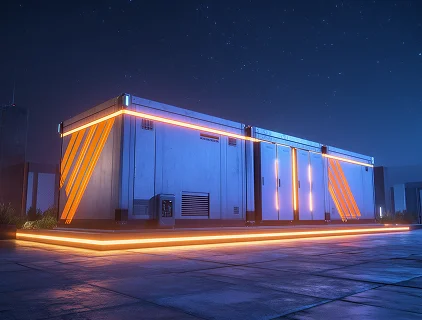
Next-Gen Energy Hits Milestone
Undercurrent Energy teams up with the U.S. Department of Energy to scale Nano-Electro Fuel™ technology nationwide, advancing grid resilience, renewable integration, and U.S. energy independence.
Chicago – August 02, 2025 – Undercurrent Energy announced a new collaboration with the U.S. Department of Energy (DOE) to scale deployment of its Nano-Electro Fuel™ (NEF) technology across the U.S. power grid. The multi-year initiative aims to enhance energy resilience, support renewable integration, and reduce dependence on rare-earth materials.
Undercurrent’s breakthrough liquid energy architecture stores energy in safe, iron-rich nanofluids rather than solid cells. This unique approach decouples power and energy, enabling utilities to scale capacity without overbuilding.
Modern energy systems face unprecedented challenges. As demand grows and renewable energy adoption accelerates, the limitations of today’s grid become increasingly clear. Reliable, scalable storage is no longer optional — it is the backbone of future energy security.
Global electricity consumption continues to surge, driven by digitalization, industrial growth, and climate adaptation. According to the IEA, worldwide demand is projected to rise by more than 25% by 2030, placing immense pressure on outdated grid infrastructure.
One of the fastest-growing factors is the adoption of electric vehicles (EVs):
The challenge is not uniform across all regions. Some areas experience strain from industrial clusters, while others are stressed by extreme weather. For example, Europe’s grids must balance intermittent wind power, while parts of Asia face surging demand from rapid urbanization.
California illustrates the urgency of the problem. In 2024, record-breaking heat waves led to peak electricity demand of over 52 gigawatts. At the same time, solar generation dropped sharply in the evening, creating the infamous “duck curve.” Without sufficient storage, utilities were forced to rely on emergency gas plants to stabilize the grid – a costly and unsustainable solution.
At the heart of the partnership is Undercurrent’s Nano-Electro Fuel™ (NEF), a nanotechnology-based liquid battery that fundamentally reimagines how energy is stored and delivered.
Unlike conventional batteries, where power and energy are locked into a single unit, NEF separates the two:
This architecture means utilities can scale energy and power independently. If more capacity is needed, they simply expand the tanks. If more power is needed, they add more stacks. This flexibility prevents the costly overbuilding common with lithium-ion solutions.
Even more importantly, NEF is non-flammable, iron-rich, and water-based. It eliminates the fire risks that have plagued grid-scale lithium installations, making it deployable in both dense urban centers and remote rural sites.

As part of the DOE collaboration, Undercurrent will deliver demonstration units for pilot projects starting in 2026. These units are expected to show:
The partnership represents more than just technology. It is a strategic step toward strengthening America’s energy independence. Today, the majority of lithium used in batteries is mined and refined overseas. This dependency creates vulnerabilities — geopolitical risks, price volatility, and supply shortages.
By using abundant U.S.-sourced iron and water-based chemistry, NEF eliminates the need for rare earth imports. That not only reduces costs but also creates new opportunities for domestic mining, refining, and advanced manufacturing.
DOE officials emphasized the national significance of the collaboration, describing it as “a model for how public-private partnerships can accelerate the clean energy transition while creating new high-skilled jobs at home.”
“Grid storage has long been the missing link in the clean energy transition. With DOE’s support, we are proving that scalable, locally sourced, and safe solutions are not only possible — they’re ready for real-world deployment.”
– John Katsoudas, CEO of Undercurrent Energy

Undercurrent’s Nano-Electro Fuel™ (NEF) technology is engineered to outperform conventional lithium-ion batteries in both performance and durability. By rethinking storage at the molecular level, NEF delivers a more sustainable and cost-effective solution.
Undercurrent Energy plans to expand its footprint significantly over the next five years. Beyond DOE pilot projects, the company is already in discussions with utilities, transportation providers, and defense contractors. Applications range from stabilizing wind and solar farms to powering military bases in remote environments where energy resilience is critical.
The company also envisions NEF as a bridge to full electrification of transportation. Because the liquid fuel can be pumped like gasoline, it opens the door to rapid refueling stations for heavy trucks, ships, or even aircraft in the future.
Undercurrent’s mission is not just about better batteries. It’s about building a new energy architecture that makes electrification practical, affordable, and safe everywhere. The DOE partnership is a validation of that mission and a signal that the U.S. is serious about leading the next wave of clean energy innovation.

